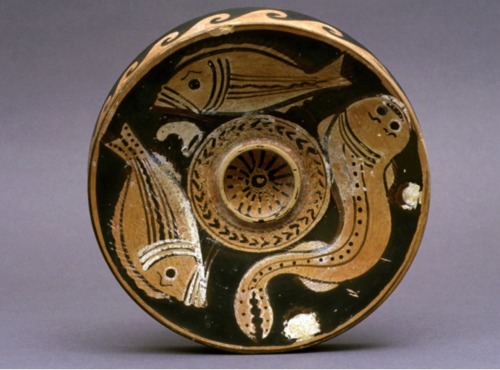Fun Facts Masterlist #1
Fun Facts Masterlist #1
The First 1000 Facts I’ve Compiled on this blog
1-10 • 11-20 • 21-30 • 31-40 • 41-50 • 51-60 • 61-70 • 71-80 • 81-90 • 91-100
101-110 • 111-120 • 121-130 • 131-140 • 141-150 • 151-160 • 161-170 • 171-180 • 181-190 • 191-200
201-220 • 221-240 • 241-250 • 251-260 • 261-270 • 271-280 • 281-290 • 291-300
301-310 • 311-320 • 321-330 • 331-340 • 341-350 • 351-360 • 361-370 • 371-380 • 381-390 • 391-400
401-410 • 411-420 • 421-430 • 431-440 • 441-450 • 451-460 • 461-470 • 471-480 • 481-490 • 491-500
501-510 • 511-520 • 521-530 • 531-540 • 541-550 • 551-560 • 561-570 • 571-580 • 581-590 • 591-600
601-610 • 611-620 • 621-630 • 631-640 • 641-650 • 651-660 • 661-670 • 671-680 • 681-690 • 691-700
701-710 • 711-720 • 721-730 • 731-740 • 741-750 • 751-760 • 761-770 • 771-780 • 781-790 • 791-800
801-810 • 811-820 • 821-830 • 831-840 • 841-850 • 851-860 • 861-870 • 871-880 • 881-890 • 891-900
901-910 • 911-920 • 921-930 • 931-940 • 941-950 • 951-960 • 961-970 • 971-980 • 981-990 • 991-1000
More Posts from Vagarynn and Others
controversial opinion but ive suffered enough and should get everything i want for forever from now on and also im pretty cute
Guys.
Y’all.
I…
I just. I just… i have discovered something. And I have laughed too much. I have laughed every time I have tried to explain it to someone. I cannot get through this.
Look. Okay.
There are two things you need to know, here.
First: There’s a style of Greek pottery that was popular during the Hellenic period, for which most of the surviving examples are from southern Italy. We call them ‘fish plates’ because, well, they’re plates, and they’re decorated with fish (and other marine life).
Like this one, currently in the Met:

Or this one, currently in the Cleveland Museum of Art:

They’re very cool. We’re not 100% sure what they were for, because most of the surviving ones were found as grave goods, but that’s a different post.
The second thing you need to know is that when we (Classics/archaeology/whatever as a discipline) have a collection of artefacts, like vases, sculptures, paintings, etc. and we do not know the name of the artist, but we’re pretty sure one artist made X, Y and Z artefacts, we come up with a name for that artist. There are a whole bunch of things that could be the source for the name, e.g. where we found most of their work (The Dipylon Master) or the potter with whom they worked (the Amasis Painter), a favourite theme (The Athena Painter), the Museum that ended up with the most famous thing they did (The Berlin Painter) or a notable aspect of their style. Like, say, The Eyebrow Painter.
Guess what kind of pottery the Eyebrow Painter made?




James Baldwin.

OCHAKO'S BUN HAS THE SAME STYLE AS TOGA'S I AM NOT OKAY 😭😭😭


Pangaea, an ancient supercontinent.
Illustration by Richard Morden
The symbolism of flowers
Flowers have a long history of symbolism that you can incorporate into your writing to give subtext.
Symbolism varies between cultures and customs, and these particular examples come from Victorian Era Britain. You'll find examples of this symbolism in many well-known novels of the era!
Amaryllis: Pride
Black-eyed Susan: Justice
Bluebell: Humility
Calla Lily: Beauty
Pink Camellia: Longing
Carnations: Female love
Yellow Carnation: Rejection
Clematis: Mental beauty
Columbine: Foolishness
Cyclamen: Resignation
Daffodil: Unrivalled love
Daisy: Innocence, loyalty
Forget-me-not: True love
Gardenia: Secret love
Geranium: Folly, stupidity
Gladiolus: Integrity, strength
Hibiscus: Delicate beauty
Honeysuckle: Bonds of love
Blue Hyacinth: Constancy
Hydrangea: Frigid, heartless
Iris: Faith, trust, wisdom
White Jasmine: Amiability
Lavender: Distrust
Lilac: Joy of youth
White Lily: Purity
Orange Lily: Hatred
Tiger Lily: Wealth, pride
Lily-of-the-valley: Sweetness, humility
Lotus: Enlightenment, rebirth
Magnolia: Nobility
Marigold: Grief, jealousy
Morning Glory: Affection
Nasturtium: Patriotism, conquest
Pansy: Thoughtfulness
Peony: Bashfulness, shame
Poppy: Consolation
Red Rose: Love
Yellow Rose: Jealously, infidelity
Snapdragon: Deception, grace
Sunflower: Adoration
Sweet Willian: Gallantry
Red Tulip: Passion
Violet: Watchfulness, modesty
Yarrow: Everlasting love
Zinnia: Absent, affection

AO3 Tagging Inspiration.
Mainly a reference for me bc I always blank when it comes to tags. Sharing in case it helps anyone else, but not intended to be prescriptive. Further references:
Ao3’s Rating System Explanation
Difference Between "A/B" and "A&B"
Fanwork Ao3 Accepts Beyond Fanfic
How tagging a pairing in the “Relationship” field vs in “Additional Tags” changes search results
List of Writing Genres
Trope Examples
Most Popular Tags on Ao3
My humble plea for people to cross-post their meta & other fannish nonfiction to ao3, and tag it with “meta analysis” so I can find it and adore it


meditations on the odyssey
-
 thegreatcloud liked this · 4 weeks ago
thegreatcloud liked this · 4 weeks ago -
 thenarratorsglasses liked this · 4 weeks ago
thenarratorsglasses liked this · 4 weeks ago -
 trhhmae liked this · 4 weeks ago
trhhmae liked this · 4 weeks ago -
 daarlingsweetheart liked this · 4 weeks ago
daarlingsweetheart liked this · 4 weeks ago -
 fungimush liked this · 4 weeks ago
fungimush liked this · 4 weeks ago -
 ohmuretsu liked this · 4 weeks ago
ohmuretsu liked this · 4 weeks ago -
 keury11 liked this · 4 weeks ago
keury11 liked this · 4 weeks ago -
 noya917 liked this · 4 weeks ago
noya917 liked this · 4 weeks ago -
 egurt liked this · 4 weeks ago
egurt liked this · 4 weeks ago -
 hhoooop liked this · 1 month ago
hhoooop liked this · 1 month ago -
 wobuffetbreakfast liked this · 1 month ago
wobuffetbreakfast liked this · 1 month ago -
 worstnunever reblogged this · 1 month ago
worstnunever reblogged this · 1 month ago -
 worstnunever liked this · 1 month ago
worstnunever liked this · 1 month ago -
 maybelaterzzz liked this · 1 month ago
maybelaterzzz liked this · 1 month ago -
 kimdokjaspubes liked this · 1 month ago
kimdokjaspubes liked this · 1 month ago -
 ehejhrhrhrht-blog liked this · 1 month ago
ehejhrhrhrht-blog liked this · 1 month ago -
 idcokie32 liked this · 1 month ago
idcokie32 liked this · 1 month ago -
 sleepsl00p liked this · 1 month ago
sleepsl00p liked this · 1 month ago -
 j311yf1shk1tty liked this · 1 month ago
j311yf1shk1tty liked this · 1 month ago -
 kireiasha liked this · 1 month ago
kireiasha liked this · 1 month ago -
 vexedvinyl liked this · 1 month ago
vexedvinyl liked this · 1 month ago -
 excaelos liked this · 1 month ago
excaelos liked this · 1 month ago -
 ireneddalgi2 reblogged this · 1 month ago
ireneddalgi2 reblogged this · 1 month ago -
 just-some-lil-guy liked this · 1 month ago
just-some-lil-guy liked this · 1 month ago -
 am31ia reblogged this · 1 month ago
am31ia reblogged this · 1 month ago -
 fanboy-2004 liked this · 1 month ago
fanboy-2004 liked this · 1 month ago -
 raining-rats liked this · 1 month ago
raining-rats liked this · 1 month ago -
 bbubpjm liked this · 1 month ago
bbubpjm liked this · 1 month ago -
 aerishime97 liked this · 1 month ago
aerishime97 liked this · 1 month ago -
 acrobaticjaper liked this · 1 month ago
acrobaticjaper liked this · 1 month ago -
 totumea liked this · 1 month ago
totumea liked this · 1 month ago -
 totumea reblogged this · 1 month ago
totumea reblogged this · 1 month ago -
 mysticcatzombie liked this · 1 month ago
mysticcatzombie liked this · 1 month ago -
 flumen-rio liked this · 1 month ago
flumen-rio liked this · 1 month ago -
 moraieelie liked this · 1 month ago
moraieelie liked this · 1 month ago -
 semitamortis liked this · 1 month ago
semitamortis liked this · 1 month ago -
 oldnew4 liked this · 1 month ago
oldnew4 liked this · 1 month ago -
 swaghumanpeanutweasel liked this · 1 month ago
swaghumanpeanutweasel liked this · 1 month ago -
 allymorningstar liked this · 1 month ago
allymorningstar liked this · 1 month ago -
 gwakgwakonyahdek liked this · 1 month ago
gwakgwakonyahdek liked this · 1 month ago -
 l3vi3than-is-h0t liked this · 1 month ago
l3vi3than-is-h0t liked this · 1 month ago -
 reapreapboi-blog reblogged this · 1 month ago
reapreapboi-blog reblogged this · 1 month ago -
 honmonoyuzu liked this · 1 month ago
honmonoyuzu liked this · 1 month ago -
 his0kaswife liked this · 1 month ago
his0kaswife liked this · 1 month ago -
 literallyjustagoat liked this · 1 month ago
literallyjustagoat liked this · 1 month ago -
 rookiecookie12 liked this · 1 month ago
rookiecookie12 liked this · 1 month ago -
 supivague liked this · 1 month ago
supivague liked this · 1 month ago -
 pleasantmagazinemiracle liked this · 1 month ago
pleasantmagazinemiracle liked this · 1 month ago -
 howdopeoplelive liked this · 1 month ago
howdopeoplelive liked this · 1 month ago -
 n00bmaster360 liked this · 1 month ago
n00bmaster360 liked this · 1 month ago




